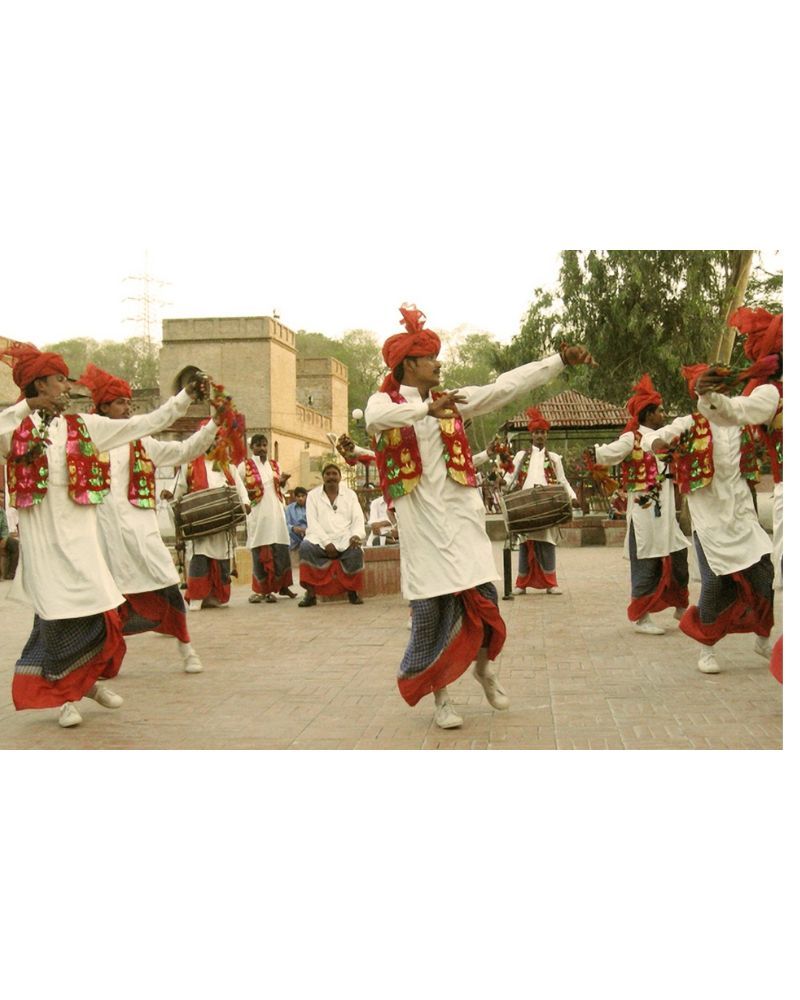Bhangra: The Heartbeat of Punjab's Culture and Celebration

Bhangra, a lively and energetic folk dance from Punjab, holds a special place not only in the cultural fabric of India but also among the global diaspora. Originating as a harvest dance, Bhangra is a reflection of the vibrancy, joy, and spirit of Punjab. Over the centuries, it has evolved from its agricultural roots to become a symbol of celebration, resilience, and cultural pride. Today, Bhangra is not just a traditional dance but a powerful expression of community, energy, and identity.
Cultural Roots and Evolution
Bhangra has its origins in the rural areas of Punjab, where it was traditionally performed by farmers during the harvest festival of Baisakhi. The dance was a way to celebrate the end of the harvest season and express gratitude for a bountiful crop. The rhythmic beats of the dhol (drum) and the energetic movements of the dancers reflected the hard work and joy of the farming community.
Originally, Bhangra was performed in small circles or groups, with men participating in the dance, often wearing traditional clothing such as kurta and chadar. It was an expression of physical strength, stamina, and unity, with dancers performing acrobatic movements, jumps, and spins to the beats of the drum.
In the mid-20th century, with the migration of Punjabis to other parts of the world, especially to countries like Canada, the United Kingdom, and the United States, Bhangra spread beyond its traditional roots. It adapted to modern music and dance styles, blending with hip-hop, rap, and Western pop influences, thus giving rise to Bhangra music in the contemporary music scene. Today, it is performed at weddings, parties, festivals, and cultural events globally, reflecting the global reach of Punjabi culture.
Cultural Importance and Symbolism
Bhangra has always been more than just a dance form; it is a powerful symbol of Punjabi culture and identity. For Punjabis worldwide, Bhangra connects them to their roots, evoking a sense of belonging and pride. It represents the spirit of resilience, as the dance has survived and flourished through centuries of change, including periods of political turmoil and migration.
The dance also serves as a bridge between generations. While it continues to be a traditional folk dance, younger generations, especially those in the Punjabi diaspora, have embraced and infused it with modern elements, creating a fusion that is both respectful of its heritage and reflective of contemporary global trends. This fusion has helped maintain Bhangra's relevance in the modern world, ensuring its continued presence on international stages.
Moreover, Bhangra holds a significant role in promoting unity and community. Whether it is performed during festivals like Baisakhi or at weddings and other social gatherings, it brings people together, transcending language and regional barriers. Its high-energy movements foster a sense of togetherness, joy, and celebration, making it a communal activity that strengthens social bonds.
Global Influence
Bhangra's influence extends far beyond the borders of Punjab. It has found a place in the global music and dance scenes, especially in popular music. International artists often incorporate Bhangra rhythms and movements into their music videos, performances, and concerts. The dance's infectious energy has made it a favorite in fitness routines and dance competitions, and it is often taught in universities and cultural institutions worldwide.
Additionally, the Bhangra community has built its own cultural and social infrastructure globally, with Bhangra dance competitions, festivals, and events being organized to celebrate the art form and bring together people from diverse backgrounds.
Bhangra is not just a dance—it is a cultural movement that carries with it the joy, spirit, and heritage of Punjab. From its origins as a harvest dance to its global presence today, Bhangra continues to evolve, yet remains a steadfast symbol of community, resilience, and pride. As it transcends cultural and geographic boundaries, Bhangra stands as a testament to the power of dance to unite, celebrate, and preserve cultural identities.